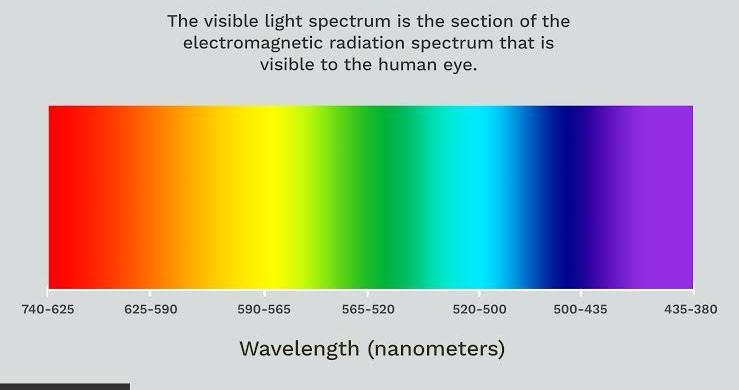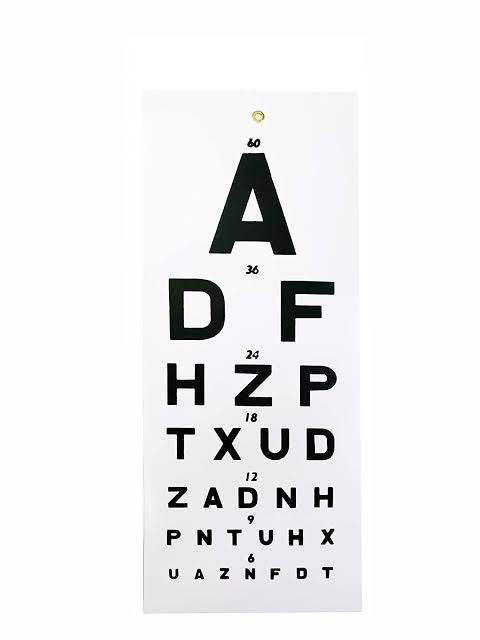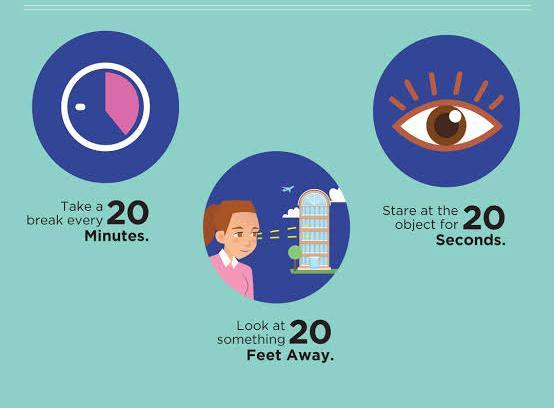SCROLLING and swiping on social media, watching TV, reading work reports on your laptop is not natural for us, and this is one of the many reasons for increasing eye problems around the world. Most of us spend a lot of time staring at screens and that can be bad for our eyes.
Blue light from electronics, like phones, TV and laptops, is linked to problems like blurry vision, eyestrain, dry eye, macular degeneration, and cataracts and it can also affect our sleep.
I will be sharing, in this post, what we need to do.
Join our WhatsApp ChannelWhat is Blue light?

Blue light is not just a light with blue colour as most of us think. Blue light is part of the visible light spectrum we can see with the human eye. It has the shortest wavelength and highest energy. Sunlight is the most significant source of blue light. Artificial sources of blue light include fluorescent light, compact fluorescent light (CFL) bulbs, LEDs, flat screen LED televisions, computer monitors, smart phones and tablet screens.
The lower the wavelength, the more the eyes contract, but the higher the wavelength, the less the eyes contract. According to the spectrum RED > GREEN > BLUE > VIOLET, violet is the UV Light for Xray, followed by blue light and others respectively.
It’s best to sleep with red lights cause it has wavelength that does not cause a strain to the eye.
This is what is killing your eyes: The flicker effect

When you read something, you stop to blink or flicker, because you need to focus on the letter and that’s why it’s alot easier reading from a paper, because when we blink, it is controlled and less frequent. But while reading from a monitor, we unconsciously blink all the time because blue light coming from our screens is interpreted as several bulb lights and our eyes try to turn them off and on at a rate of 100 times /sec. This is known as Flicker effect. The brain is so slow that we do not perceive it, but our eyes are fast, causing the iris to open and close which later results to our eyes hurting when we sit in front of our screens for a long period.
Don’t reduce the brightness of your screen; it only makes it worse
When you control the brightness and make it lower, you reduce the wavelength of the blue light even the more, making it affect the eyes greatly. Instead of reducing the brightness, it’s best for the brightness of your screen to be 50%.
Blue light also kills your sleep
When we wake up in the morning and open the curtains so we can start the day and rays of sunlight suddenly hits us and we feel alert; that’s the blue-light effect on the body. Blue light stimulates parts of the brain that make us feel alert, elevating our body temperature and heart rate. During the day, blue light can improve performance and attention, tuning our circadian rhythm.
Circadian rhythms are finely-tuned, 24-hour cycles that help our bodies know when to carry out essential functions and light is the most important factor that helps in aligning circadian rhythms and, these rhythms were closely aligned with sunrise and sunset.
With the advent of artificial light and electronics, people are being exposed to increasing amounts of light before bedtime. While all types of visible light can affect circadian rhythms, blue light has the largest impact so when we use our devices close to bedtime, these devices emit blue light that interferes with our natural sleep cycles, giving rise to Insomnia, depression and others.
Digital eye strain
Your eyes may feel tired or irritated after focusing intensely on activity like viewing a computer screen, reading a book, or driving a car for a long period of time. This is known as eyestrain. It’s symptoms include headache, blurry vision, dry eyes and back pain.
What to do

- Put your screen at 50 percent brightness while using it.
- Use matte screens : They are coated and prevent reflection of light.
- Place your TV/laptops when the window is on the left or right side not behind or in front of your window to prevent reflection and double image.
- Use fonts that are simple to focus or crispy letter fonts.
- Find a better lamp: If you like to read in bed, try getting a lamp that doesn’t emit blue light. Red or orange lamps work well, as does natural lighting like candles.
- 20/20/20 rule: If you find yourself gazing at screens all day, your every 20 minutes spent using a screen, you should try to look away at something that is 20 feet away from you for a total of 20 seconds. Relax your eyes and feel less of eye strain.
If you find you have symptoms of eyestrain, implement some methods to reduce eyestrain or prevent it altogether. If you find that these approaches don’t help your eyestrain, consult your doctor.


















Follow Us